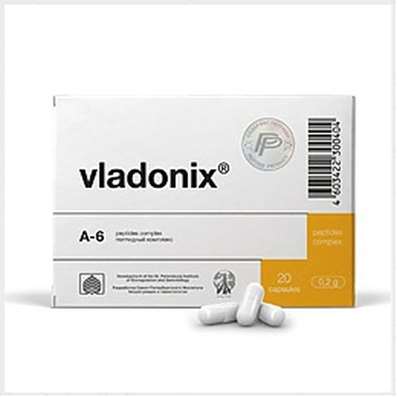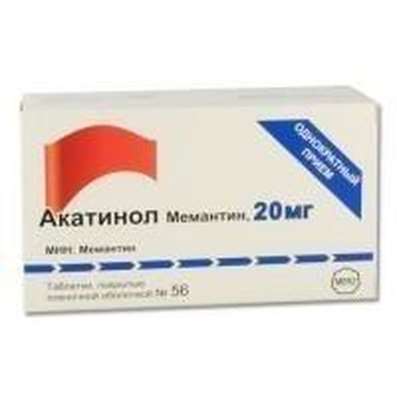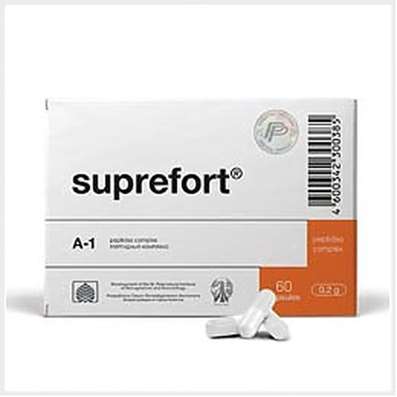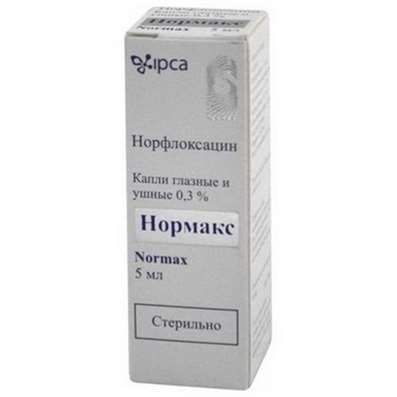Instruction for use: Faspic
I want this, give me price
Active substance Ibuprofen
ATX code M01AE01 Ibuprofen
Pharmacological group
NSAIDs - Propionic acid derivatives
Nosological classification (ICD-10)
G43 Migraine
The pain of migraine, Migraine, hemiplegic migraine, Migraine headache, A migraine attack, Continuous headache, hemicranias
K08.8.0 * Painful toothache
Dentinal pain, Dentinal pains, Pain pulpitis, Anesthesia in dentistry, Pain syndromes in dental practice, Pain after removal of tartar, Pain when extracting a tooth, Toothache, Pain after dental interventions
M06.9 Other specified rheumatoid arthritis
Rheumatoid arthritis,Pain syndrome in rheumatic diseases, Pain in rheumatoid arthritis, Inflammation in rheumatoid arthritis, Degenerative forms of rheumatoid arthritis, Children's rheumatoid arthritis, Exacerbation of rheumatoid arthritis, Acute articular rheumatism, Rheumatic arthritis, Rheumatic polyarthritis, Rheumatoid arthritis, Rheumatic polyarthritis, Rheumatoid arthritis, Rheumatoid arthritis of active course, Rheumatoid arthritis, Rheumatoid polyarthritis, Acute rheumatoid arthritis, Acute rheumatism
M14 Arthropathy in other diseases classified elsewhere
M45 Ankylosing spondylitis
Ankylosing spondylarthrosis, Marie-Strumpel disease, Ankylosing spondylitis, Pain syndrome in acute inflammatory diseases of the musculoskeletal system, Pain syndrome in chronic inflammatory diseases of the musculoskeletal system, Bechterew's disease, Ankylosing spondylitis, Diseases of the spinal column, Rheumatic spondylitis, Bechterew-Marie-Strumpel disease
M79.2 Neurology and neuritis, unspecified
Pain syndrome with neuralgia, Brachialgia, Occipital and intercostal neuralgia, Neuralgia, Neuralgic pain, Neuralgia, Neuralgia of intercostal nerves,Neuralgia of the posterior tibial nerve, Neuritis, Neuritis traumatic, Neuritis, Neurological Pain Syndromes, Neurological contractures with spasms, Acute neuritis, Peripheral neuritis,Post-traumatic neuralgia,Severe pain of a neurogenic nature, Chronic neuritis, Essential neuralgia
N94.4 Primary dysmenorrhea
Primary functional dysmenorrhea, Pain in primary dysmenorrhea, Primary algodismenorea, Menstrual cramps
R07.0 Sore throat
A sharp pain in the throat, Sore throat
R50 Fever of unknown origin
Malignant hyperthermia, Hyperthermia malignant
R51 Headache
Pain in the head, Cephalgia, Pain with sinusitis, Pain in the back of the head, Painful headache, Headache of vasomotor genesis, Headache of vasomotor origin, Headache with vasomotor disorders, Headache, Neurological headache, Serial headache
R52.0 Acute pain
Acute pain syndrome, Acute pain syndrome with osteoarthritis, Acute pain syndrome of traumatic origin, Severe pain of a neurogenic nature, Severe pain, Pain syndrome at delivery
R52.2 Other constant pain
Pain syndrome, rheumatic origin, Pain at vertebral lesions, Pain in the chamber, Pain for burns, Pain syndrome weak or moderate, Perioperative pain,Moderate to severe pain, Moderately or weakly expressed pain syndrome, Moderate to severe pain, Ear pain of otitis, Neuropathic pain, neuropathic pain
T14.9 Injury unspecified
Pain syndrome after trauma, Pain syndrome with injuries, Pain syndrome with trauma and after surgery, Pain in case of injury, Pain of a traumatic nature, Joint pain with injuries, Postoperative and post-traumatic pain, Pain in case of injury, Pain of a traumatic origin, Severe pain syndrome of traumatic origin, Deep tissue damage, Deep scratches on the trunk, Closed injury, Minor Household Injuries, Minor skin damage, Violations of the integrity of soft tissues, Uncomplicated trauma, Extensive traumatic injury, Acute pain syndrome of traumatic origin, Edema with trauma, Postponed sports injuries, Post-traumatic pain, Soft tissue injuries, Joint wounds, Sports injuries, Injury, Traumatic pain, Traumatic pains, Traumatic infiltrate,Injuries to sports
Z100 * CLASS XXII Surgical practice
Abdominal surgery, adenomectomy, Amputation, Coronary angioplasty, Angioplasty of the carotid arteries, Antiseptic skin treatment for wounds, Antiseptic Hand, Appendectomy, atherectomy, Balloon coronary angioplasty, Vaginal hysterectomy, The coronary bypass, Interventions in the vagina and cervix, Interventions on the bladder, Intervention in the mouth, Restoration and reconstructive surgery, Hand hygiene of medical personnel, Gynecologic surgery, Gynecological intervention, Gynecological surgery, Hypovolemic shock during operations, Disinfection of purulent wounds, Disinfection of wounds edges, Diagnostic intervention, Diagnostic procedures, Cervical Diathermocoagulation, Long-surgery, Replacing the fistula catheters, Infection in orthopedic surgery, Artificial heart valve, cystectomy, Short-term outpatient surgery, Short-term operation, Short surgical procedures, Krikotireotomiya, Blood loss during surgery, Bleeding during surgery and in the postoperative period, Kuldotsentez, laser photocoagulation, laser coagulation, retinal laser coagulation, Laparoscopy, Laparoscopy in Gynecology, CSF fistula, Small gynecological operations, Small surgical procedures, Mastectomy and subsequent plastic, mediastinotomy, Microsurgical operations on the ear, Mukogingivalnye operation, suturing, Minor surgery, neurosurgical operation, Immobilization of the eyeball in ophthalmic surgery, testectomy, pancreatectomy, Perikardektomiya, The period of rehabilitation after surgery, The period of, convalescence after surgery, Percutaneous transluminal coronary angioplasty, Pleural thoracentesis, Pneumonia postoperative and posttraumatic, Preparation for surgical procedures, Preparation for surgery, Preparation of the surgeon's hands before surgery, Preparation of the colon for surgical procedures, Postoperative aspiration pneumonia in neurosurgical and thoracic surgery, Postoperative nausea, Postoperative bleeding, postoperative granuloma, postoperative shock, The early postoperative period, myocardial revascularization, Radiectomy, gastric Resection, bowel resection, uterine Resection, liver Resection, enterectomy, Resection of part of the stomach, Reocclusion of the operated vessel, Bonding tissues during surgical procedures, Removal of sutures, Condition after eye surgery, Condition after surgery, Condition after surgery in the nasal cavity, Condition after gastrectomy, Status after resection of the small intestine, Condition after tonsillectomy, Condition after removal of the duodenum, Condition after phlebectomy, Vascular surgery, Splenectomy, Sterilization of surgical instruments, Sterilization of surgical instruments, sternotomy, Dental surgery, Dental intervention in periodontal tissues, strumectomy, Tonsillectomy, Thoracic surgery, total gastrectomy, Transdermal intravascular coronary angioplasty, Transurethral resection, Turbinektomiya, Removal of a tooth, cataract surgery, Removal of cysts, tonsillectomy, Removal of fibroids, Removing the mobile primary teeth, Removing polyps, Removing broken tooth, Removal of the uterus body, Removal of sutures, Urethrotomy, Fistula likvoroprovodyaschih ways, Frontoetmoidogaymorotomiya, Surgical infection, Surgical treatment of chronic limb ulcersm, Surgery, The surgery in the anal area, The surgery on the colon, Surgical practice, The surgical procedure, Surgical interventions, Surgery on the gastrointestinal tract, Surgical procedures on the urinary tract, Surgical procedures on the urinary system, Surgical intervention of the genitourinary system, Surgical procedures on the heart, Surgical manipulation, surgery, Surgery on the veins, Surgical intervention, Vascular surgery, Surgical treatment of thrombosis, cholecystectomy, Partial gastric resection, transabdominal hysterectomy, Percutaneous transluminal coronary angioplasty, Percutaneous transluminal angioplasty, Coronary artery bypass, tooth Extirpation, Extirpation of milk teeth, pulpectomy, pulsative cardiopulmonary bypass, tooth Extraction, teeth Extraction, cataract extraction, Electrocoagulation, endourological intervention, episiotomy, Etmoidotomiya, Complications after tooth extraction
Composition and form of release
Tablets, coated with a coating.
ibuprofen 400 mg
excipients: L-arginine; sodium bicarbonate; crospovidone; magnesium stearate; hypromellose; sucrose; titanium dioxide; macrogol 400
in the blister is 6 pcs .; in a pack of cardboard 1, 2, 4 or 5 blisters.
Granules for solution for oral administration, with mint flavor 1 packet
ibuprofen 200 mg
excipients: L-arginine; sodium bicarbonate; sodium saccharinate; aspartame; mint flavor; sucrose
in bags of 3 g; in a pack of cardboard 12 or 30 bags.
Granules for solution for oral, with taste or aroma of apricot 1 sachet
ibuprofen 400 mg
600 mg
excipients: L-arginine; sodium bicarbonate; sodium saccharinate; aspartame; apricot flavor; sucrose
in bags of 3 g; in a pack of cardboard 12 or 30 bags.
Granules for solution for oral administration, with mint-anise taste 1 packet
ibuprofen 400 mg
600 mg
excipients: L-arginine; sodium bicarbonate; sodium saccharinate; aspartame; mint flavor; anise flavor; sucrose
in bags of 3 g; in a pack of cardboard 12 or 30 bags.
Description of dosage form
White capsular-shaped tablets, coated with a shell, having a risk on one side.
Characteristic
Ibuprofen - the active substance of the preparation Faspic - is a derivative of propionic acid.
pharmachologic effect
Pharmacological action - anti-inflammatory, antipyretic, analgesic.
Pharmacodynamics
Non-selectively blocks COX-1 and -2 and has an inhibitory effect on the synthesis of PG.
The analgesic effect is most pronounced for inflammatory pains. The analgesic activity of the drug does not apply to the narcotic type. It shows antiaggregant activity.
Anesthetic effect with Faspic application develops 10-45 min after administration.
Pharmacokinetics
When ingested well absorbed from the digestive tract. When using Faspic Cmax, ibuprofen in plasma is approximately 25 or 40 μg / ml and is reached approximately 15-30 minutes after taking the drug on an empty stomach at a dose of 200 or 400 mg, respectively. Approximately 99% is associated with plasma proteins. Slowly distributed in the synovial fluid and removed from it more slowly than from the plasma. It is metabolized in the liver mainly by hydroxylation and carboxylation of the isobutyl group. Metabolites are pharmacologically inactive. It has a two-phase kinetics of elimination. T1 / 2 from the plasma is 1-2 hours. Up to 90% of the dose can be detected in the urine in the form of metabolites and their conjugates. Less than 1% is excreted unchanged in urine and, to a lesser extent, with bile.
Clinical Pharmacology
It is shown that the analgesic effect in the application of Faspic (ibuprofen in the form of L-arginine salt) develops 10-45 minutes after administration.
indications
Feverish syndrome of different genesis; pain syndrome of various etiologies (including sore throat, headache, migraine, toothache, neuralgia, post-operative pain, posttraumatic pain, primary algodismenorrhea); inflammatory and degenerative diseases of the joints and spine (including rheumatoid arthritis, ankylosing spondylitis).
Contraindications
Hypersensitivity to any of the ingredients that make up the drug, as well as to acetylsalicylic acid or other NSAIDs in the anamnesis. Erosive and ulcerative diseases of the digestive tract (including gastric ulcer and duodenal ulcer in the acute stage, Crohn's disease, ulcerative colitis); "Aspirin" asthma; hemophilia and other disorders of blood clotting (including hypocoagulation), hemorrhagic diathesis; bleeding of any etiology; deficiency of glucose-6-phosphate dehydrogenase; pregnancy, lactation, children under 12 years of age, diseases of the optic nerve.
With caution: in the elderly, with heart failure, arterial hypertension, cirrhosis with portal hypertension, hepatic and / or renal failure, nephrotic syndrome, hyperbilirubinemia, peptic ulcer and duodenal ulcer (history), gastritis, enteritis, colitis; blood diseases of unclear etiology (leukopenia and anemia).
pregnancy and lactation
Contraindicated in pregnancy. For the duration of treatment, breastfeeding should be discontinued.
Side effects
On the part of the gastrointestinal tract: NSAID-gastropathy (abdominal pain, nausea, vomiting, heartburn, loss of appetite, diarrhea, flatulence, constipation, rarely - ulceration of the gastrointestinal mucosa, which in some cases is complicated by perforation and bleeding); irritation or dryness of the oral mucosa, pain in the mouth, ulceration of the gingival mucosa, aphthous stomatitis, pancreatitis.
From the hepatobiliary system: hepatitis.
On the part of the respiratory system: dyspnea, bronchospasm.
From the sense organs: hearing impairment (hearing loss, ringing or tinnitus).
From the central and peripheral nervous system: headache, dizziness, insomnia, anxiety, nervousness and irritability, psychomotor agitation, drowsiness, depression, confusion, hallucinations, rarely - aseptic meningitis (more often in patients with autoimmune diseases).
From the cardiovascular system: heart failure, tachycardia, increased blood pressure.
From the urinary system: acute renal failure, allergic nephritis, nephrotic syndrome (edema), polyuria, cystitis.
Allergic reactions: skin rash (usually erythematous or urticaria), itchy skin, Quincke's edema, anaphylactoid reactions, anaphylactic shock, bronchospasm or dyspnoea, fever, erythema multiforme exudative (including Stevens-Johnson syndrome), toxic epidermal necrolysis (syndrome Lyell), eosinophilia, allergic rhinitis.
On the part of the organs of hematopoiesis: anemia (including hemolytic, aplastic), thrombocytopenia and thrombocytopenic purpura, agranulocytosis, and leukopenia.
On the part of the organs of vision: toxic damage to the optic nerve, vague vision or double vision, scotoma, dryness and irritation of the eyes, edema of the conjunctiva and eyelids (allergic genesis).
The risk of ulceration of the gastrointestinal mucosa, bleeding (gastrointestinal, gingival, uterine, hemorrhoidal), visual impairment (color vision, scotoma, optic nerve damage) increases with prolonged use of the drug in large doses.
Changes in laboratory indicators: bleeding time (may increase); serum glucose concentration (may decrease); clearance of creatinine (may decrease); hematocrit or hemoglobin (may decrease); serum creatinine concentration (may increase); activity of "liver" transaminases (may increase).
Interaction
The efficacy of furosemide and thiazide diuretics can be reduced due to a delay in sodium associated with inhibition of prostaglandin synthesis in the kidneys.
Faspic can enhance the effect of oral anticoagulants, so simultaneous use is not recommended.
With concomitant administration with acetylsalicylic acid, ibuprofen reduces its antiaggregant effect (possibly an increase in the incidence of acute coronary insufficiency in patients receiving small doses of acetylsalicylic acid as an antiplatelet agent).
Faspic can reduce the effectiveness of antihypertensive drugs.
In the literature, single cases of an increase in plasma concentrations of digoxin, phenytoin and lithium with simultaneous administration of ibuprofen have been described.
Faspic (like other NSAIDs) should be used with caution in combination with acetylsalicylic acid or other NSAIDs and GCS (this increases the risk of adverse drug effects on the gastrointestinal tract).
Faspic can increase the concentration of methotrexate in plasma.
Combined treatment with zidovudine and Faspic may increase the risk of hemarthrosis and hematoma in HIV-infected patients with hemophilia.
The combined use of Faspic and tacrolimus may increase the risk of developing nephrotoxic action due to a reduction in the synthesis of PG in the kidneys.
Ibuprofen enhances the hypoglycemic effect of oral hypoglycemic agents and insulin; it may be necessary to adjust the dose.
Dosing and Administration
Inside.
Tablets - with a glass of water (200 ml), while eating. The initial dose for adults and children over 12 years is 400 mg, if necessary - 400 mg every 4-6 hours; the maximum daily dose is 1200 mg. The duration of therapy is no more than 7 days.
Granules - the contents of the sachet are dissolved in 50-100 ml of water and taken immediately after cooking during or after a meal. Adults and children over 12 years of age - bags of 200 mg: 4-6 pcs / day; 400 mg - 2-3 pcs / day; for 600 mg - 1-3 pcs / day. The maximum daily dose when using 200 and 400 mg bags is 1200 mg; 600 mg - 2,400 mg.
To overcome the morning stiffness in patients with arthritis, it is recommended to take the first dose immediately after awakening.
In patients with impaired renal, hepatic or cardiac function, the dose should be reduced.
Overdose
Symptoms: abdominal pain, nausea, vomiting, retardation, drowsiness, depression, headache, tinnitus, metabolic acidosis, coma, acute renal failure, decreased blood pressure, bradycardia, tachycardia, atrial fibrillation, respiratory arrest.
Treatment: gastric lavage (only for an hour after taking), the appointment of activated charcoal, alkaline drink, forced diuresis, symptomatic therapy (correction of acid-base state, blood pressure).
Precautionary measures
If there are signs of bleeding from the digestive tract, the Faspic should be canceled (see the section "Contraindications").
Faspic can mask objective and subjective signs of infection, so ibuprofen therapy in patients with infection should be administered with caution.
The occurrence of bronchospasm is possible in patients suffering from bronchial asthma or allergic reactions in the anamnesis or in the present.
Side effects can be reduced by applying the minimum effective dose with the shortest duration of treatment. With prolonged use of analgesics, there is a risk of developing analgesic nephropathy.
The use of Faspic can adversely affect female fertility and is not recommended for women planning a pregnancy.
The preparation contains 16.7 mg of sucrose in 1 table, and this should be taken into account in the presence of appropriate hereditary intolerance to fructose, glucose-galactose malabsorption syndrome or a deficiency of sucrose-isomaltase.
Patients who report visual impairment with Faspic therapy should stop treatment and undergo ophthalmologic examination.
NSAIDs can increase the level of "liver" enzymes.
During treatment, it is necessary to monitor the picture of peripheral blood and the functional state of the liver and kidneys.
When symptoms of gastropathy appear, careful monitoring including esophagogastroduodenoscopy, a blood test with determination of hemoglobin, hematocrit, analysis of feces for latent blood is shown.
To prevent the development of NSAIDs, gastropathy is recommended to be combined with PGE (misoprostol) preparations.
If it is necessary to determine 17-ketosteroids, the drug should be discontinued 48 hours before the test.
During the period of treatment, ethanol is not recommended.
special instructions
Patients should refrain from all activities requiring increased attention, rapid mental and motor reaction.
storage conditions
At a temperature of no higher than 25 ° C.
Keep out of the reach of children.
Shelf life
3 years.
Do not use after the expiry date printed on the package.

 Cart
Cart





